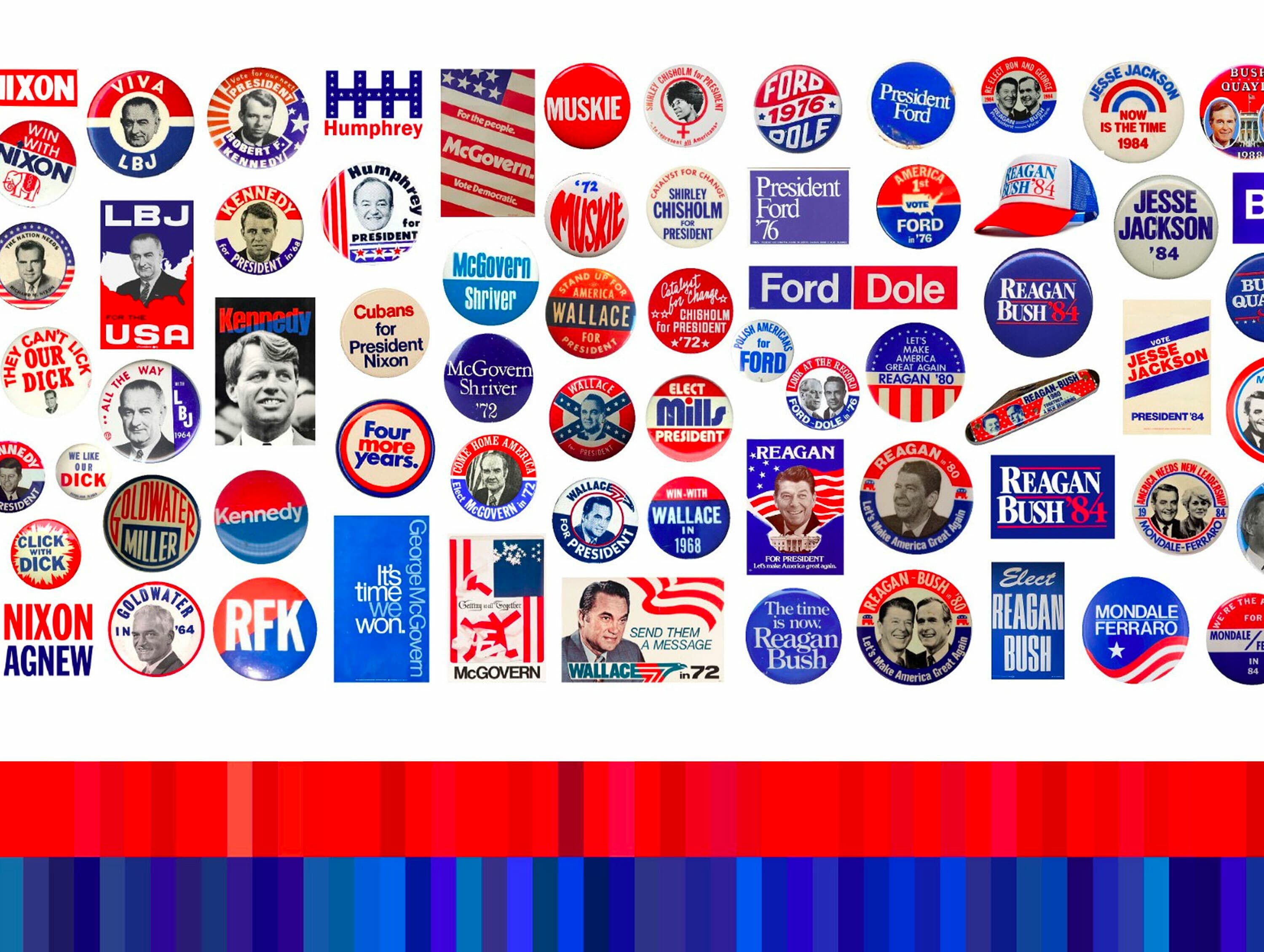Branding Your Nonprofit? Your ED Should Not Lead the Charge
For branding projects to be effective and run smoothly, you need the right person running point for your team.
By Deroy Peraza, Partner at Hyperakt
Your organization has a respected, visionary Executive Director. Perhaps they have been leading your nonprofit for several decades or even built it from the ground up — it’s their life’s work. Or perhaps they’ve been there a few years and came in with strong ideas to take the organization’s work to the next level.
Your Executive Director is so invested in your nonprofit’s success that they’ve announced they want to have a prominent role in your organization’s rebranding process to ensure their vision is captured in the new identity. This is great, right?
Wrong. Let’s talk about why Executive Directors should avoid trying to lead branding projects at all costs.

Illustration by Merit Myers
They’re Too Attached
I’ll start with a confession: As a leader of a small studio, I’ve led several of our own rebranding efforts over the last few decades, the most recent being last year. Every one of these efforts has been painful for our team. Why? Because they all had to work with me to get things approved.
As a founding partner at the studio, I’m so attached to our work that our brand feels almost like an extension of me. I scrutinize every detail, question every word, and, frankly, overthink everything. I can’t help it. With our latest effort — our largest yet — it took nearly two years and a ton of iteration to land on where we are today, and it’s still a work in progress. This is an oversimplification; a lot of thinking and work went into our positioning and changes in our internal processes that will help us live into our new branding, and we’ve learned a ton along the way. We’re all very proud of the work. But for our team, for any organization, two years is an eternity. It’s frustrating to see that we can do this work three times faster for our clients than we can for ourselves.
This happens because in a small business like ours — especially one where the partners are creative directors by trade — the branding process tends to be overly dependent on the leader. The same often happens with startups and small nonprofits.
Working with a leader who holds all the answers in their brain and doesn’t share them with the team is not an easy ride. You’re constantly at the whim of the latest new idea or chasing a tangent they want to explore. You’re beholden to their singular vision of what the brand should be.
While this approach might be necessary for small organizations, it’s just not viable for larger organizations. Yet we’ve had many experiences over the years where EDs of organizations with staffs of several dozen or even several hundred have been roadblocks to advancing a branding project. There are both practical and strategic reasons why this isn’t great practice.
Time Pressure, Lack of Trust
As far as I can remember, in every case we’ve worked on ED-led or ED-dependent projects, timelines had to be extended longer than planned, scopes grew, and everyone involved experienced frustration with the process.
In some instances, the ED wants to control the rebranding effort from the get-go; other times the ED decides to “delegate” but then drops unexpected feedback that sends everyone running to accommodate their input. Either way, the process takes far longer than it should because for every step forward, the ED’s direction or decisions or changes cause the work to take two steps back.
There are two practical reasons for this: Time and trust.
For brands to become true strategic assets, they need to be a reflection of the people working within the organizations they represent. This is collaborative work that requires an investment of time from your staff.
Time is the one resource EDs rarely have. They have to juggle a never-ending stream of strategic decisions. It’s difficult for an ED to go deep — a requirement of the branding process — because they just don’t have the bandwidth. Once a project becomes dependent on the ED, everyone else gets blocked when they don't have the availability to engage, resulting in long delays.
Time is not the only or even most important factor here, though. When an ED feels they need to drive a branding process, it’s a signal of larger internal communication gaps and lack of trust in staff to convey the information necessary to a partner like us to create a resonant brand.
This trust issue happens for a host of reasons: The organization might be constantly putting out fires and lack the time and procedures required to educate and empower team members; the ED and leadership team may be unable or unwilling to share their vision and thinking with their staff; or worse, they’ve created a culture of fear and dependence so that nothing gets done without their hands directly in the work. Sometimes there’s a lack of strategic alignment internally, or the team is trying to do organizational strategy at the same time they’re updating the brand.
Together, this lack of time and trust has practical ramifications for a branding project, often doubling timelines and budgets. Worse, it makes people doubt their own abilities and place in the organization, makes them fear leadership, and creates frustration. These underlying symptoms tend to not only affect work on branding — they affect the organization’s effectiveness at accomplishing its strategic goals.
An Approach That Works
We see the best results when the client team is led by someone with experience leading communications, marketing, design, or overall brand experience for the organization. Typical titles for this role might be: Communication Director, Director of Brand & Marketing, Design Director, Chief Experience Officer, etc.
The person in this role can prioritize the branding project because it is critical to their role. They are your in-house brand champion. They have skin in the game because they will be charged with putting your brand to work once it’s launched. They are just removed enough that they can manage the project objectively, and they are empowered to make decisions to keep things moving forward. But they serve several other important roles.
The Communication Director helps the broader team understand how communication writ large furthers the organization’s mission. In order to excel at their job, they have to be adept at managing their team’s expectations — especially their senior leadership team. They also have to be excellent translators of the leaders’ vision. They are privy to all the internal dynamics, the program work, the organizational strategy, but they can filter out the noise and prioritize feedback from different parties in service of guiding the design team working on the brand.
The Ideal Role for the Executive Director
Just because Executive Directors aren’t ideal project leaders doesn’t mean they don’t play a part in a branding or rebranding project. EDs should be more involved during the initial strategy phase as we collect information about your organization. Typically this happens in the form of interviews aimed at unearthing the leader’s strategic vision. EDs might also attend key presentations, as long as they’re able to give their team space to share their reactions rather than dominating the conversation. But, for the most part their role should be behind the scenes, and they should rely on the Communication Director to keep them informed of progress, pass on any questions that require their input, and secure the approvals needed to keep the project moving. This approach allows EDs to focus on big-picture stuff and limits the time they have to dedicate to the effort.
Finding the Right Balance
We know all organizations aren’t the same and that all leaders aren’t the same. The makeup and dynamic of your stakeholder team will vary depending on your specific circumstances, but the goal remains the same: for the branding process to be smooth and effective.
In order for that to happen, creative partners like us need to build a bridge of connection with one strong, supportive project leader within your team. That person is both pillar and gatekeeper. They have the time and wherewithal to filter what information crosses the bridge and they manage who delivers it and when. They keep traffic moving and prevent roadblocks and traffic jams from happening. They advocate for and protect both their organization and their creative partners.
If you’d like to learn more about setting up your stakeholder team for successful branding projects, or if you feel like you’ve got all your pillars in place and you’re ready to jump in, we’d love to hear from you.



